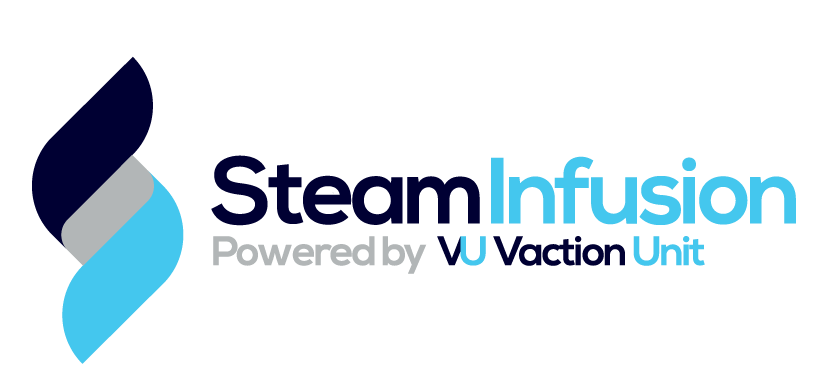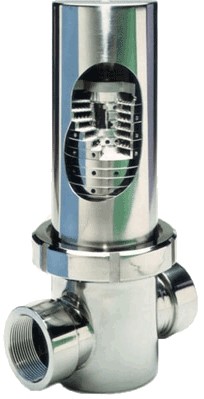What steam do I need in my food facility?
When considering a technology such as Steam Infusion, it may be easy to think that you’d be ready to hit the ground running as long as you have steam on your site. If I have a boiler I have steam, right?
Although this is true, it’s not always so clear-cut. For example, did you know there are actually several types of steam? And that only certain types of steam are suitable for our innovative Steam Infusion technology? This is because Steam Infusion works like direct steam injection so it’s important that the steam is clean enough to be ingested by humans in the end product. Here, we take you through the different types of steam and help you get to the bottom of which one is right for your processes.
What steam do I need?
Although it might seem like ‘one steam suits all’, this is rarely the case. Different types of steam contain different levels of additives, chemicals or contamination, and it’s important to ensure you have the right type of steam before going ahead and integrating Steam Infusion or any other process/technology which involves direct steam contact with foodstuffs.
The different types of steam are:
1. Plant steam
Plant steam is the lowest-grade steam and is used in the production of paper, petrochemicals, laundries and heating, ventilation and air conditioning (HVAC). It isn’t safe for human consumption in food or beverage products.
2. Culinary grade / filtered steam
Culinary grade steam is the most commonly used steam in the food industry, and is used in the production of food and beverages as it’s the minimum safe level for consumption.
3. Clean steam
Clean steam is purer than culinary grade steam and plant steam, and is used in the production of cosmetics, food and beverages, with many manufacturers choosing to use clean steam in the manufacture of products for high risk consumers such as babies or hospital patients to mitigate the risk of any contamination being ingested.
4. Pure steam
Pure steam is used in the production of pharmaceuticals and biotechnology to ensure the products are not cross contaminated with any additives and chemicals.
Like the names suggest, as you move down the list the steam will get purer. Production of pharmaceuticals will require the highest-grade steam, to ensure that their products are not cross contaminated with additives or chemicals. However, this brings with it lower levels of efficiency, particularly for use in the food industry, as well as a very hefty price tag!
So we’ve ruled out two types of steam for a food facility; let’s take a closer look at the ones that can be used with Steam Infusion.
Culinary grade steam
“Steam of culinary quality means steam that is free of entrained contaminants, is relatively free of water in liquid form and is suitable for use in direct contact with food products.”
Culinary rated steam filter
Culinary grade steam is the most commonly used steam in the food industry, due to its cost-effective nature and filtration requirements.
What this means is that culinary grade steam requires:
Use of a steam separator to remove excess water content
Installation of a hygienic steam filter that removes 95% of particulates of 2 micron or greater
Steam distribution system downstream of the hygienic filter to be in stainless steel
Use of FDA approved boiler chemicals, which relates the use of non-volatiles within the formulation so that any impurity remains in the boiler with removal by way of regular blowdown as standard boiler operating practice
Clean steam
Clean steam is the next step up from culinary grade and has no additives or chemicals in the steam. It’s typically raised from purified water and passed through a dedicated clean steam generator which ensures its quality is maintained and is suitable for direct contact with the product. On some occasions raw water may be used to generate the steam, but must be pre-treated to ensure there are no raw water contaminants.
The design of the steam network is critical to ensuring the purity of the steam. Similarly to culinary grade steam, clean steam also uses a stainless steel system to ensure there is no corrosion which could potentially result in small particles in the steam. The system also needs to be crevice-free with self-draining products to ensure no microbial growth.
Although clean steam is used in the food and beverage industry, it does not tend to be as common as culinary grade steam. That said, there are some food facilities that only work with clean steam. Baby food production in the UK is made with clean steam due to the importance of the food being of pure quality with no chemicals or additives. Organic food and beverages will also use clean steam for a similar reason.
P&ID of example layout
Culinary grade steam vs clean steam
So how do you choose which steam you need? Culinary grade steam tends to be more common in the food industry because of the perceived cost implications of specifying clean steam. Yet oftentimes the cost of equipment required can be similar whether you’re installing culinary grade filters or a clean steam generator. The primary question that needs to be addressed is that of risk: culinary grade steam can minimise the risk of contaminants entering the food product, clean steam all but eliminates the risk. It’s important to evaluate what is important to your application and your consumers. We work closely with the biggest global steam equipment suppliers who can help you choose the right equipment for your needs.


